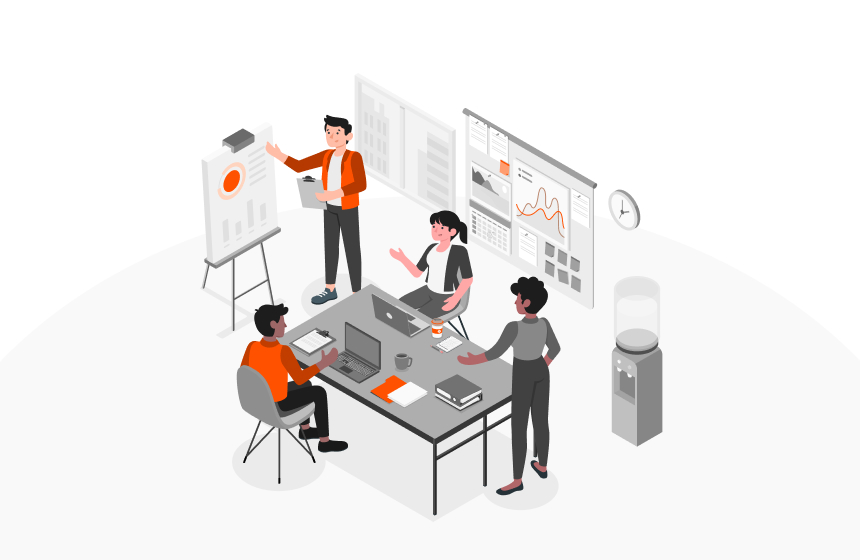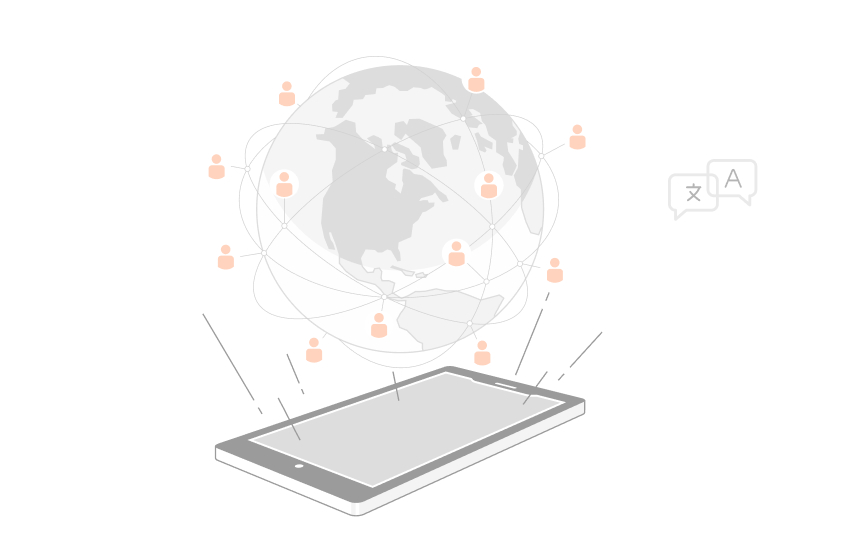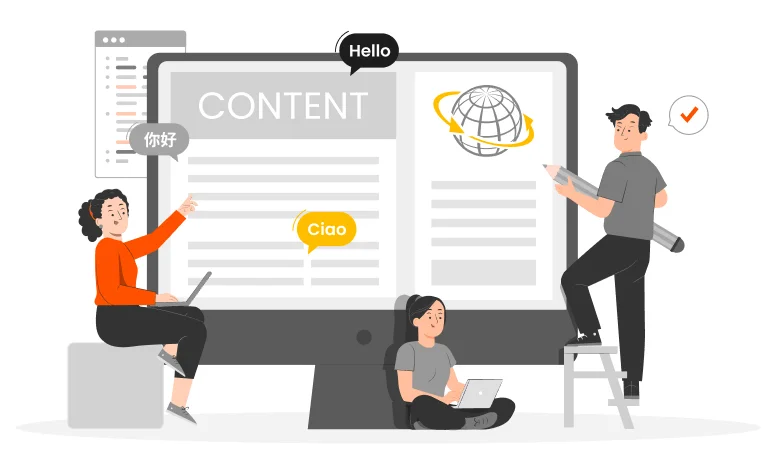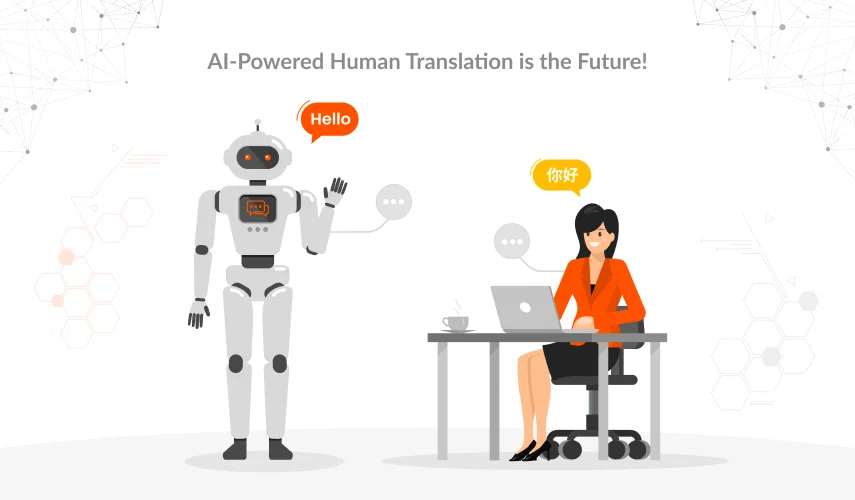Translation is becoming one of the fastest-evolving industries in 2024. It is not so surprising. The use of online translation tools like CAT is becoming more common. Although the hybrid approach is the most common form of translation these days, a new version is now trending at an international level. Content volume is increasing which means translators need to be super active and quick about their translation game. Going global is not as easy as it once was. Localization is now an imperative part of the translation process.
Now collaborative translation is taking its roots among the most standard procedures of converting the content from the source language to the target language.
Looking for a better solution and advancing the translation methodology, collaborative translation was presented as the ultimate solution. What started as a trial, now is one of the fastest ways of translating documents in a fast turnaround time.
What is Collaborative Translation?
Imagine a translation system where several translators can work side-by-side, regardless of the geographical distance, in real time. The document is shared among the group of translators for simultaneous translation. Thus it is a collaborative translation.
When a translation company uses collaborative translation software it allows the translators to work for various departments, offices, states, and countries to work together. It also improves the translation process quality-wise and gives experts the freedom to proofread more quickly.
Collaborative translation software is a localized system. For a translation company, these are some of the best investments to counter for. With the help of the latest translation systems, a translation agency has a better chance and more opportunities at the international level.
But how do you know which collaborative translation software is the right choice for your translation agency?
Top Features of Collaborative Translation Software

Each software comes with exclusive features that help make it unique. Below we discuss the top collaborative translation software features you need to look for;
1. Translation Memory
One of the most common and most needed components of collaborative translation software is that it consists of the translation memory feature.
But why is it important?
It helps the company to upgrade the translation process. Translation memory decreases the translation cost. If used, it takes less time for translators to translate the document. Translation memory is more like the word dictionary. Every word translated in a specific language pair is stored in it.
So does it reduce the time and effort a translator has to input for the translation? Absolutely. The translation memory picks the words and phrases as the translation takes place. It keeps working in the background.
This is why it is the most demanding feature for a collaborative translation system.
2. Post-Editing Translation
This feature is associated with translation memory. Despite the use of translation memory, human translators still need to revise the documents for proofreading.
The collaborative translation system must allow human translators to achieve accurate translation with post-editing features. When the first draft of translation is created it goes through the post-editing process in a fast turnaround time. It gives more time for editing the document.
In the localization management system, the predominantly machine-translated file is technically the first draft. It’s a rough translation of the document. However, to remove the errors, the translators begin the editing process. The best collaborative translation software improves the initial draft of the document translation.
3. Invite Collaborators for Translation
Another of the common features of a collaborative translation system is that it allows collaborative editing. More than one translator from different countries or cities is online and completes the translation request as required.
We are talking about external translators (maybe even from different translation companies or individual translators). The role of internal translators and external translators may vary. For instance, it may happen that internal translators only have to proofread or review the translation done by external translators.
But it will depend on the translator’s skills and experience. If he/she speaks both source and target language they often get the big chunk to translate the important pieces of the documents. However, the collaborative feature must allow you to connect with external translators for online collaboration.
4. Tracking the Translation Process
Like every other good software, the collaborative translation software should also cover the tracking part. Revision tracking is an essential feature. With this feature, one can exactly see who edited the document what part of the text was edited, and so on.
It does sound a lot similar to Google Docs, where a single user or multiple users can review the editing that takes place. This includes the date and timestamp too.
Likewise, the collaborative translation system must allow the translators to review and track the changes made during the translation. This is an important feature because the project manager can easily keep track of the translated content by internal and external translators.
5. API Access
To integrate the collaborative translation software with other localization systems, you need API access. Any quality translation software will have an inclusive API feature. The translator can integrate the software with other useful apps that will be helpful during the translation process. A content management system is the most common example.
On the bright side, the API feature also lets the project manager distribute the content extracted from translation memory and use it for samples with additional changes.
6. Two-Step User Authentication
What good is translation software if it doesn’t provide confidentiality or has a breach in the storage? The matter of privacy and confidentiality becomes twice as hard to maintain when agencies are using collaborative translation software.
It is important that the software you use requires a two-step user authentication. Because there are multiple users (translators) working on the single document, keeping track of the number of active participants is vital.
When more users are using a single account the chances of a breach are usually high. User authentication will make it necessary to verify the user before they can actually access the software. This helps to protect and maintain data confidentiality.
7. Communication
When multiple translators are engaging on the collaborative translation system, they need to communicate as well. Therefore communication through chat and comment must be an in-built feature.
A translator can mention the users to notify them personally. This way the specific translator will be notified and so on. This allows open and easy communication among translators during the translation process.
Even before the translation takes place, translators need to collaborate and discuss the particular keys of the document. So a collaborative translation system must allow the user to reply to an individual translator or a group of translators either on a comment or via email.
Bottom Line
The range and quality of features may vary from one collaborative translation software to another. Marsub offers one of the easy-to-use translation management system that helps translators be more accurate and efficient in translation. The quality of features will determine how good the specific translation is as the final product. So it is one of the highly demanded tools in the translation process.
Are you willing to learn more about the types of software used for high-quality translation? Contact us for further details.



